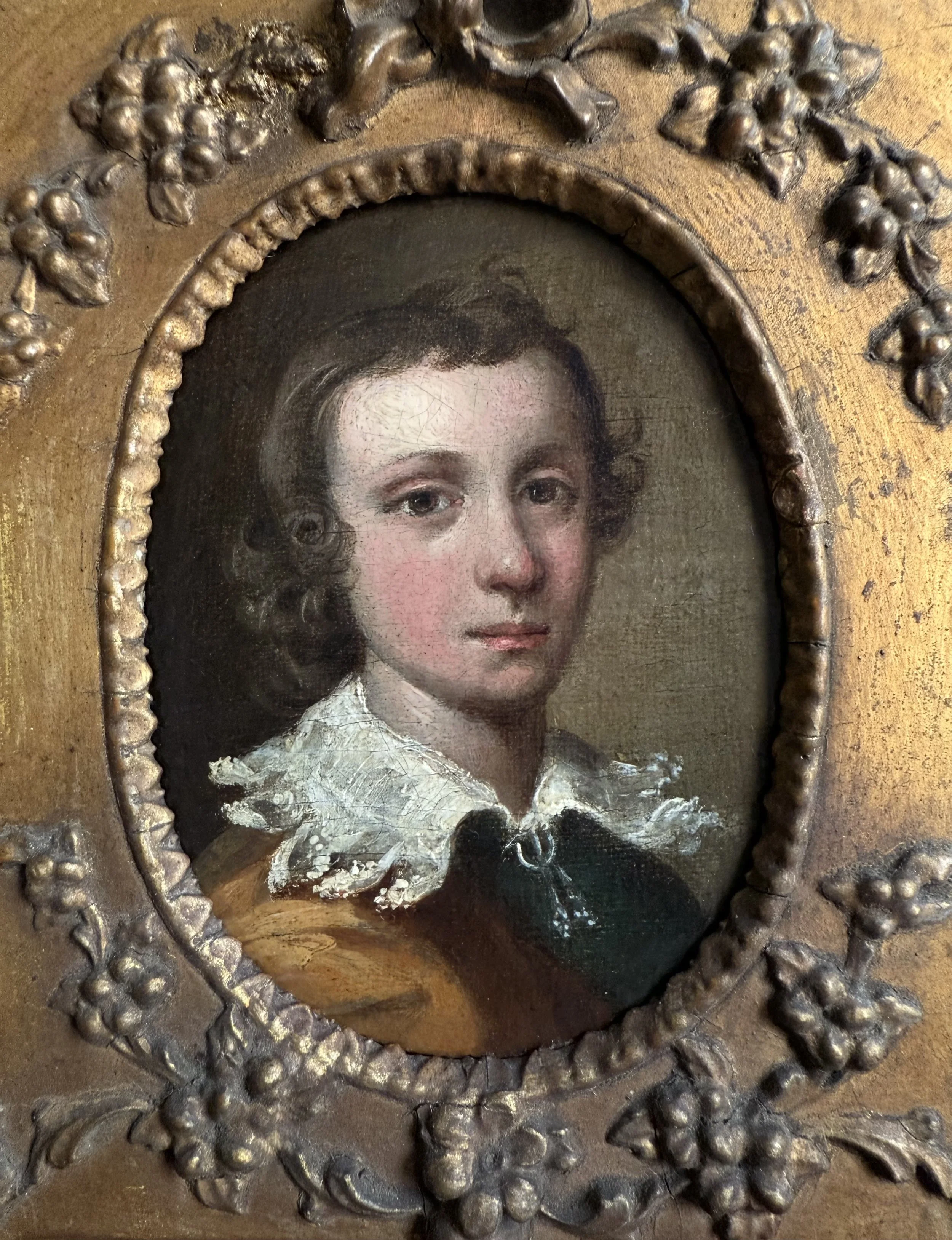
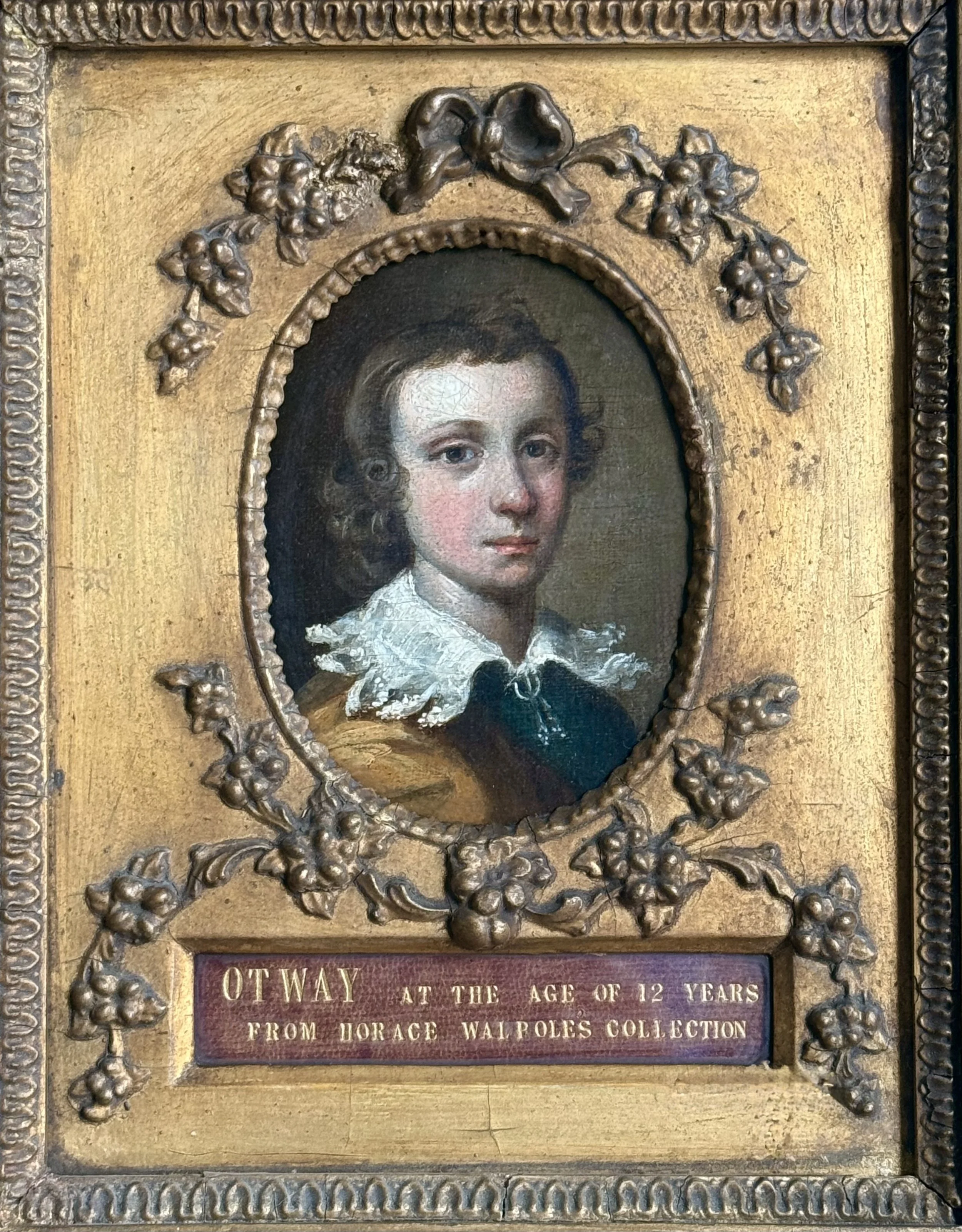
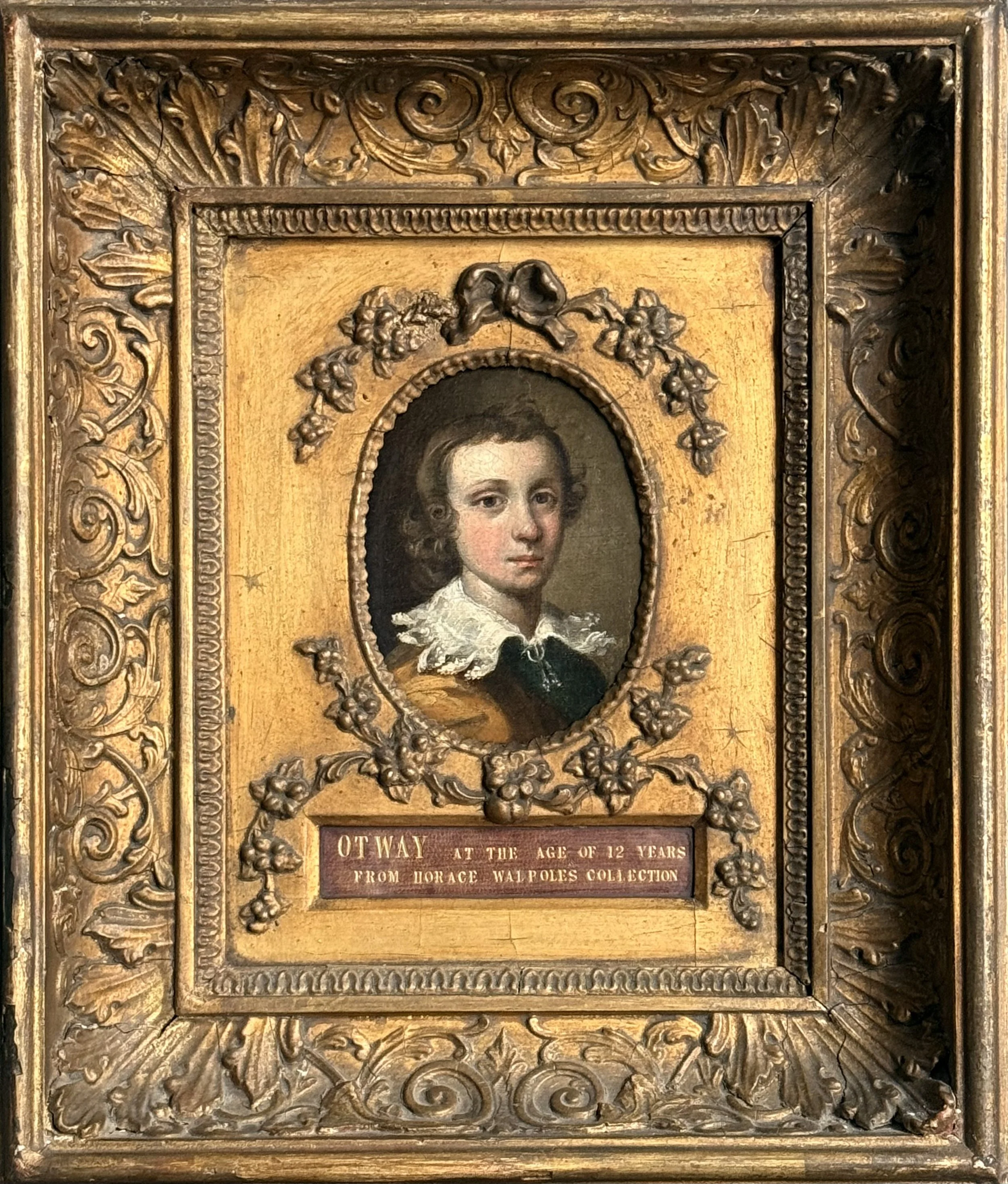
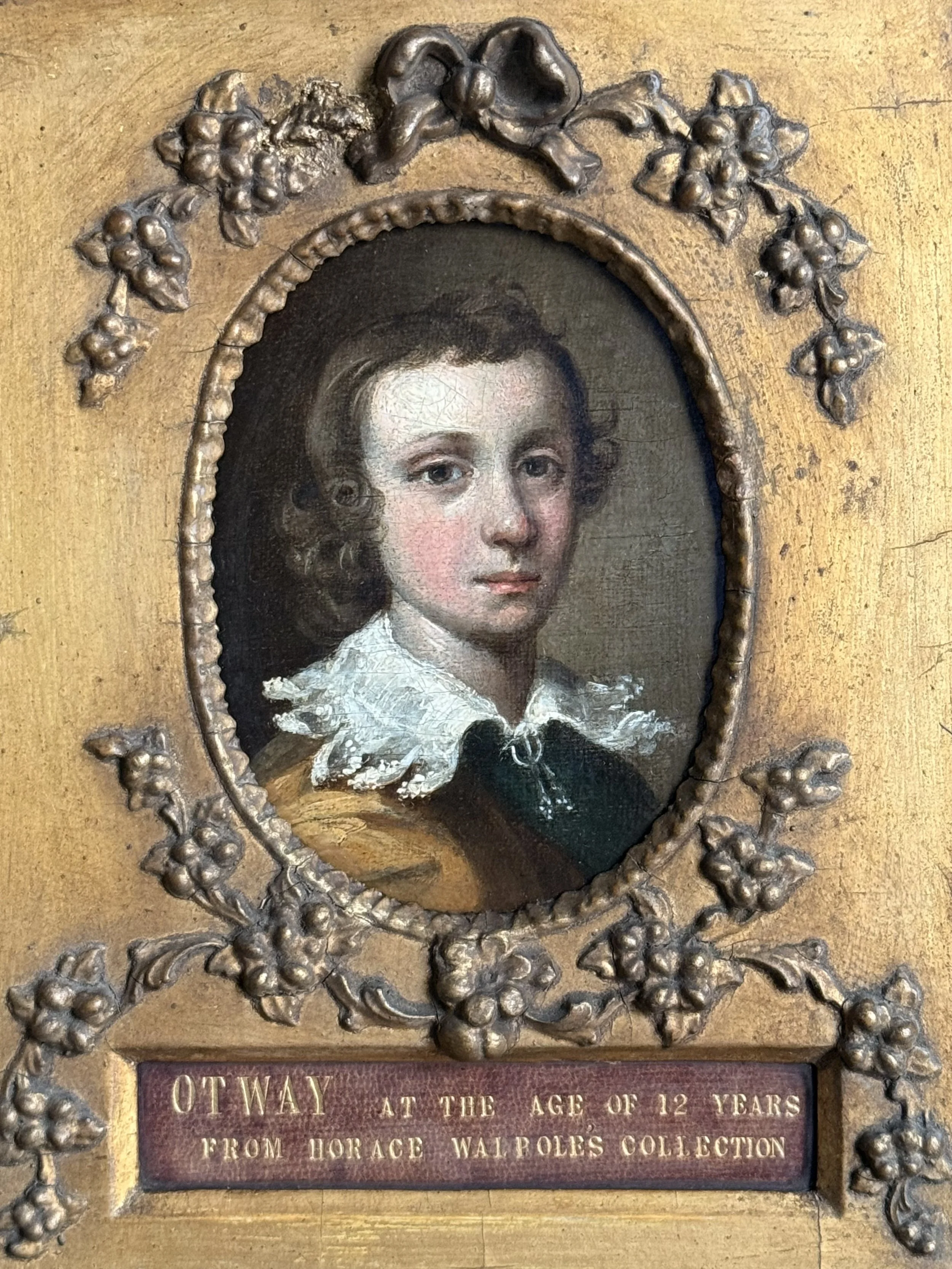
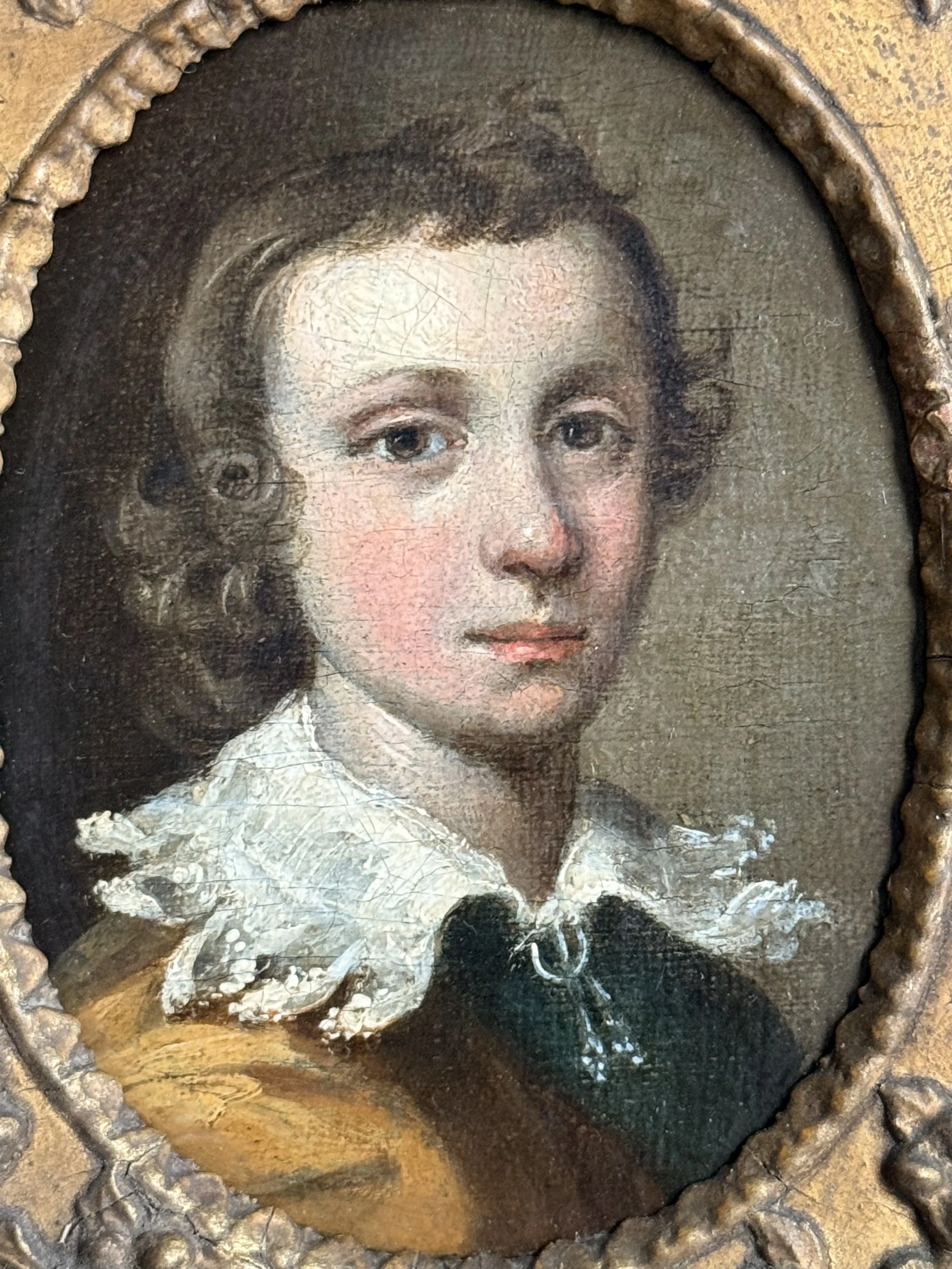
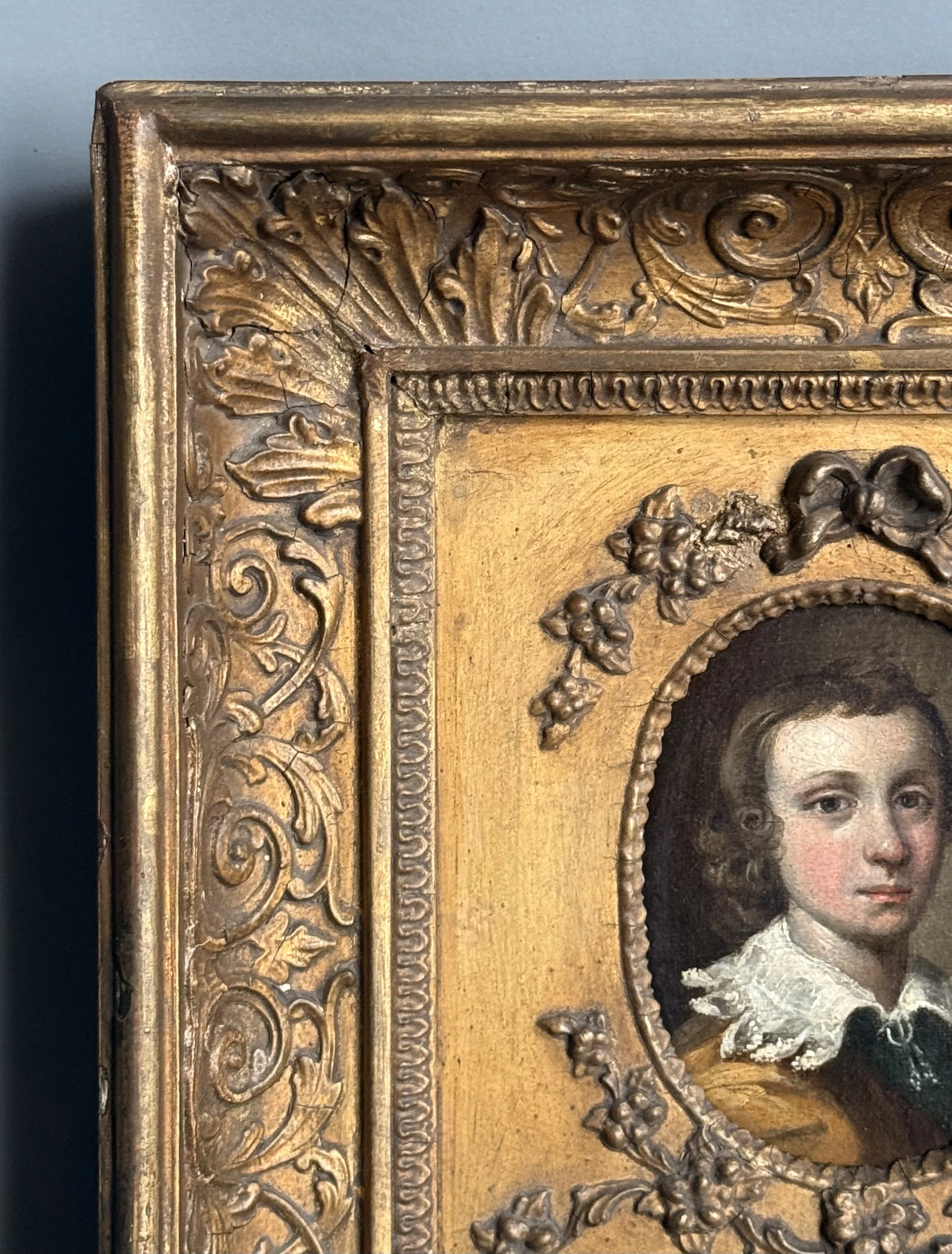
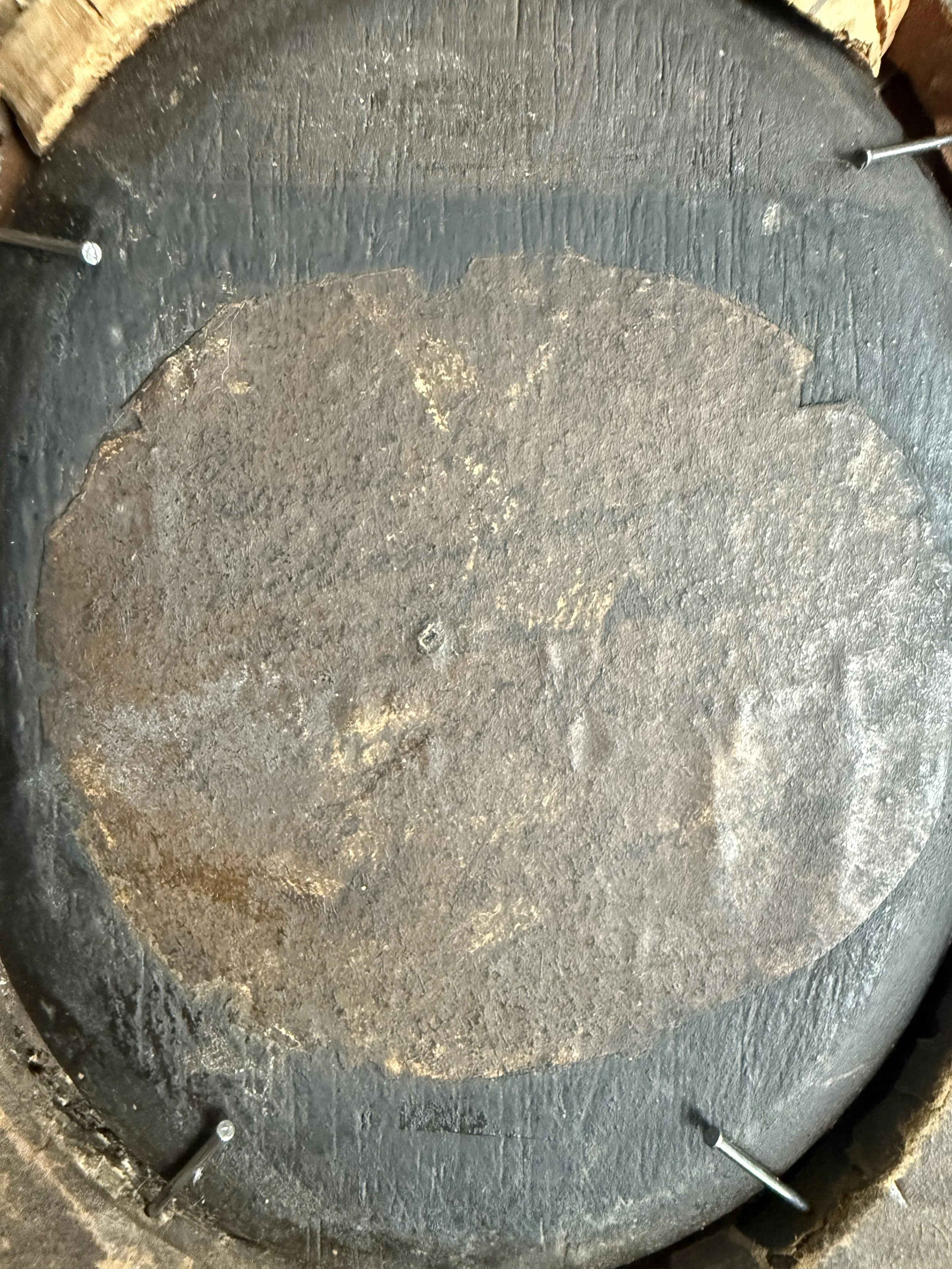
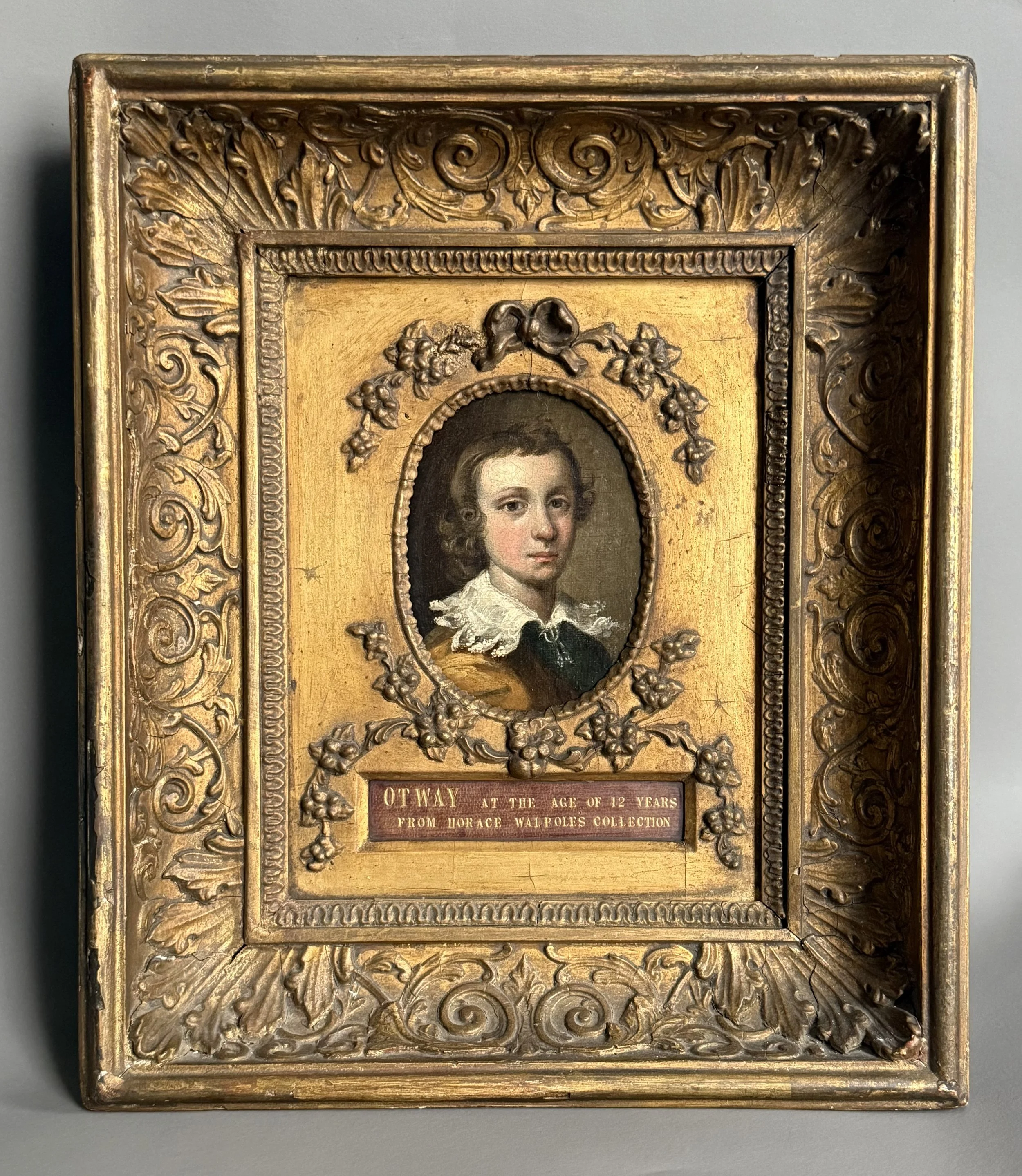
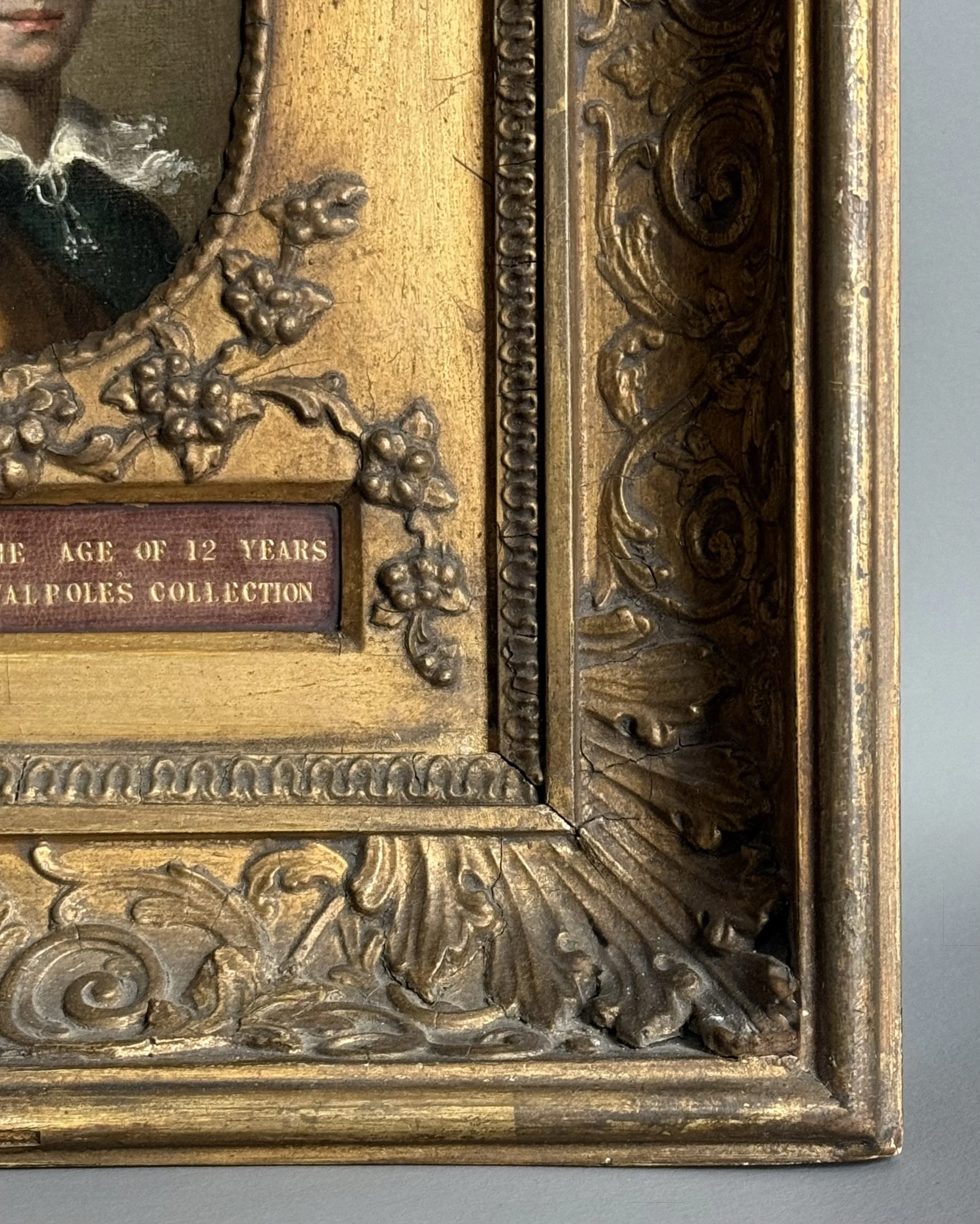
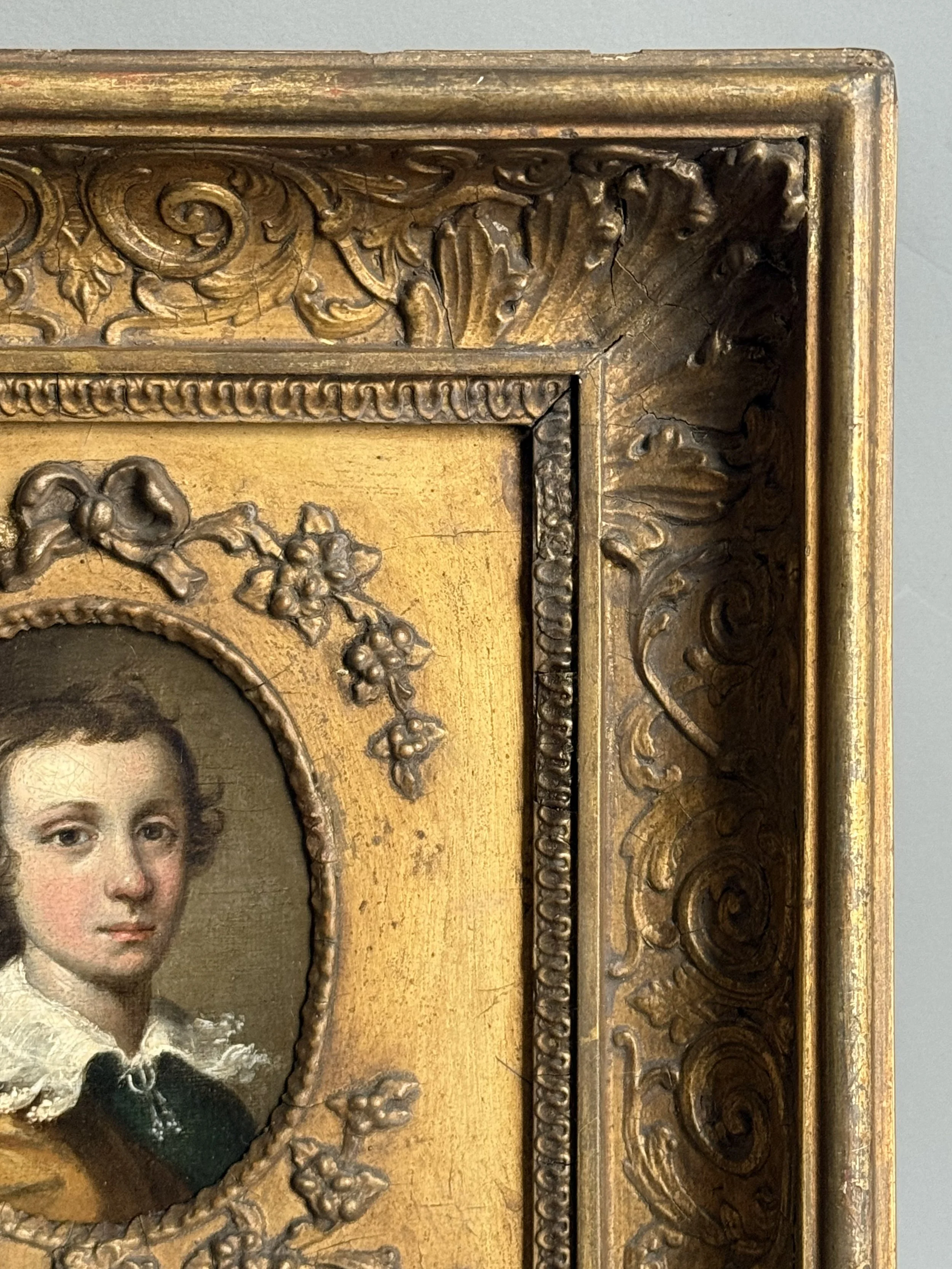
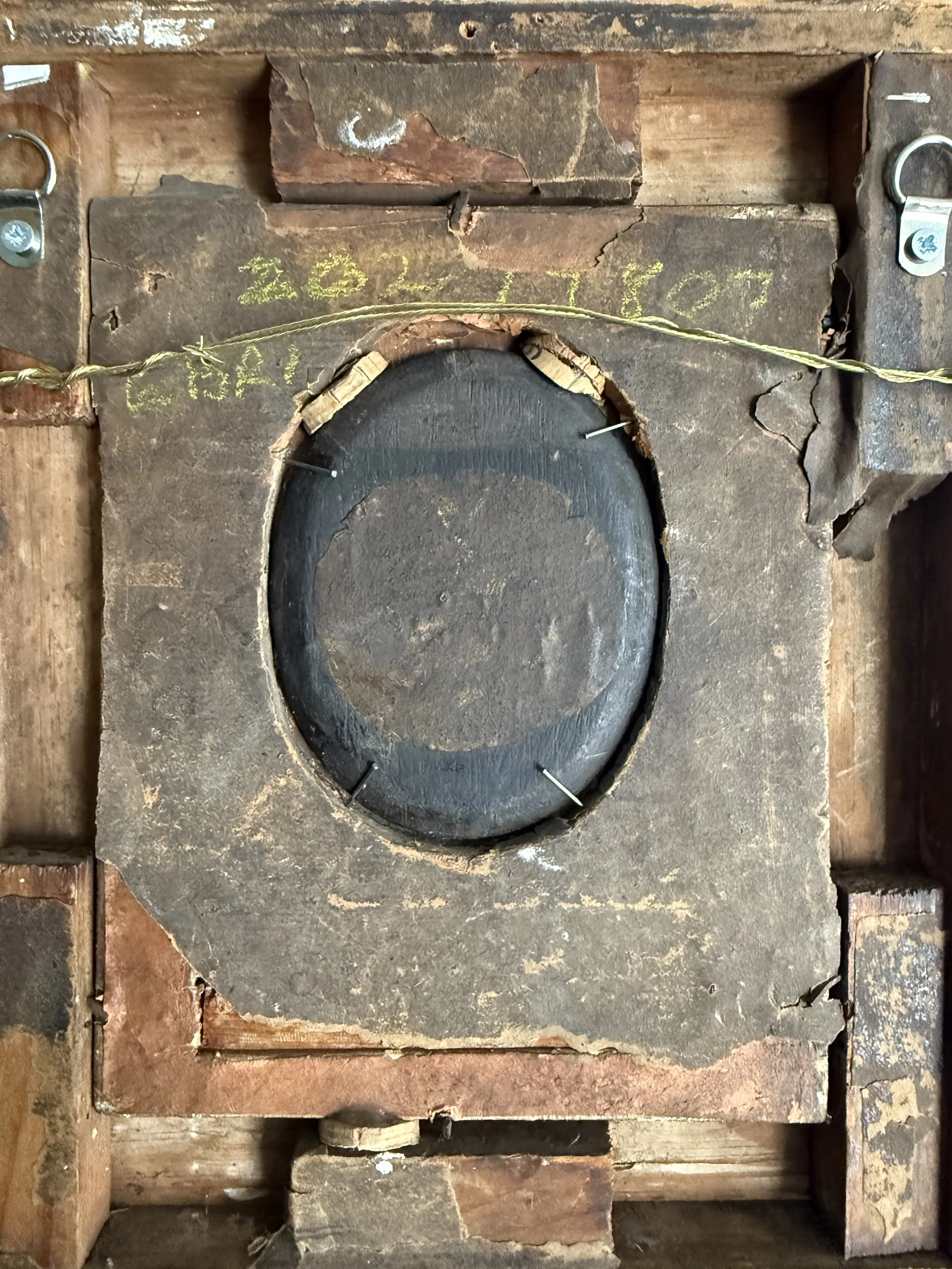
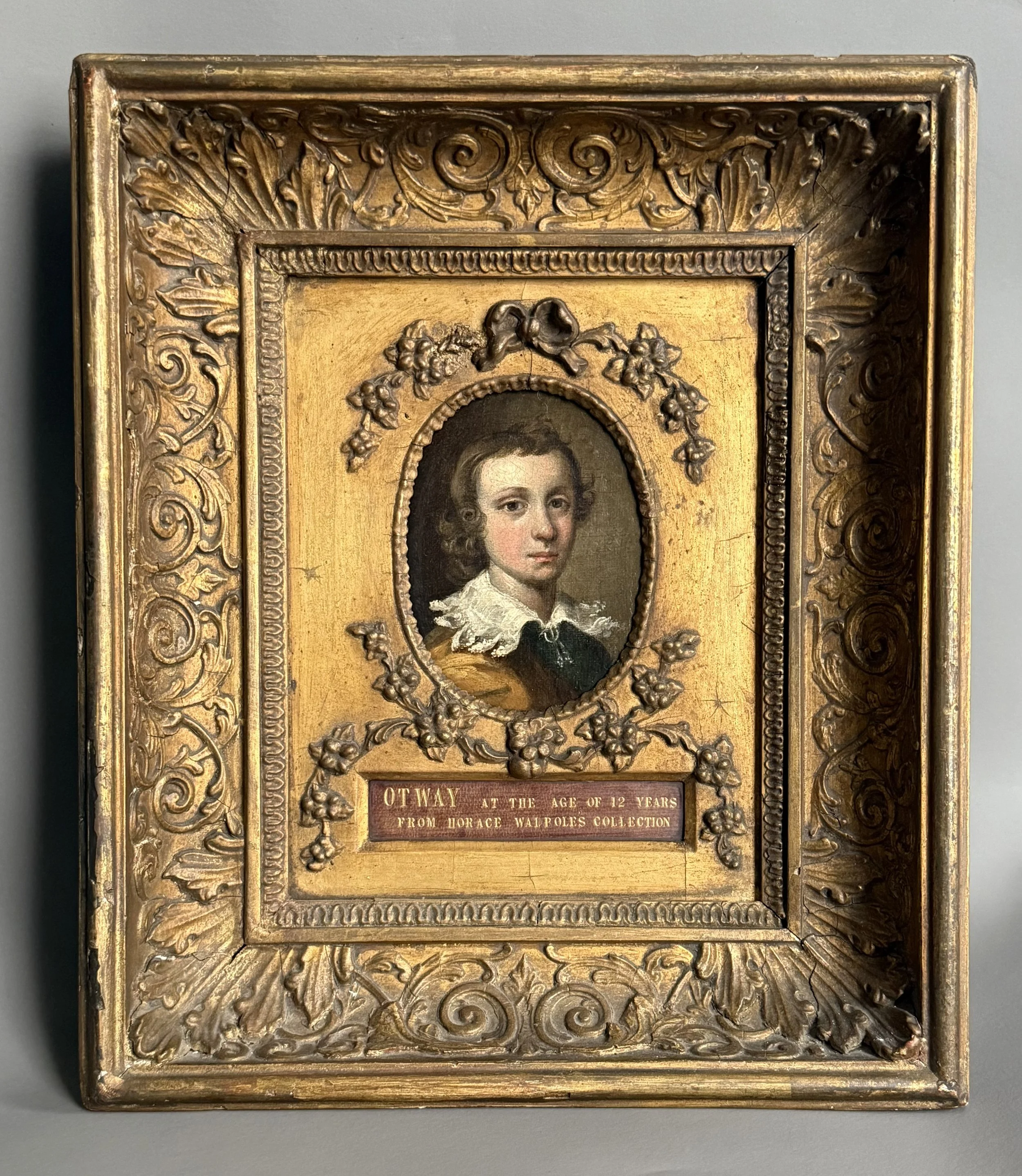
18TH CENTURY ENGLISH SCHOOL - PORTRAIT OF MASTER OTWAY IN VAN DYKE DRESS.
Diminutive 18th century English portrait of a young gentleman of the Otway family from Castle Otway. Formerly in the collection of Horace Walpole at Strawberry Hill House London.
Painted in the oval on canvas laid on panel, the attractive young sitter wears Van Dyck dress a style of clothing, which drew inspiration from the 17th-century Flemish painter Anthony van Dyck. This style was popular in the mid-18th century, especially for fancy dress and masquerades, where people would adopt the "Vandyke" style as a form of historical costume. This was due in part to a fascination with events of 100 years before over the Civil War and Charles I's demise.
A tooled leather and gilt panel set into the frame front reads ‘Otway’ at the age of 12 years from Horace Walpoles collection. The sitter is traditionally identified as a young man of the military and naval Otway family from Castle Otway. Lady Otway and her daughter are the sitters in a celebrated portrait ‘Mrs Otway & Child’ by Sir Joshua Reynolds.
A contemporary inscription to the reverse reads ‘Presented by Sir William Chambers 14th of May 1791 to H Walpole Earl of Orford’
Sir William Chambers RA (1722-1796) and Sir Horace Walpole (1717-1797) were friends and their contrasting views, particularly on gardening are well documented. Sir Horace Walpole could see the Chinese Pagoda at Kew ( designed by Sir William Chambers) from his gardens in Twickenham and he famously said of the ten story structure ‘ In a fortnight you will be able to see it in Yorkshire!’
Horace Walpole (1717-1797) Horatio ('Horace') Walpole, 4th Earl of Orford was an English Whig politician, writer, historian and antiquarian. A pioneer of the Gothic taste in art, architecture and literature, he formed an exceptional collection at Strawberry Hill, the 'little Gothic castle' which he designed in Twickenham. His literary works include the first history of English art, Anecdotes of Painting, 1762, and the Gothic novel, The Castle of Otranto, 1764. Walpole was a great socialite and his collected letters are full of gossip and information about the most fashionable figures of the eighteenth century. He succeeded in 1791 as 4th Earl of Orford.
Sir William Chambers RA (December 1722 - 1796) Sir William Chambers was the architectural advisor to King George III and a Founder member of the Royal Academy. He served as the RA’s first Treasurer and designed its first purpose-built home, Somerset House.
William Chambers was born in December 1722 to Scottish parents in Gothenberg, Sweden, where his father was working as a merchant. He was baptised on 23 February 1723. He was educated in England before beginning a mercantile career as a teenager, joining the Swedish East India Company. He travelled to Bengal and twice to China in the 1740s, where he had enough time to study mathematics and make many studies of local buildings he saw there. Returning to Europe, he studied architecture in Paris and Italy before settling in London in 1755 and establishing his own practice.
In 1757 Chambers was appointed as architectural tutor to the 19-year old Prince of Wales, later George III and also published a book Designs of Chinese Buildings, Furniture, Dresses, etc. , illustrated with his own detailed drawings from his time in the country. In the same year he began work with Queen Augusta, the Prince’s mother to lay out the gardens around her house at Kew. Chambers’s ten-storey Great Pagoda, which still sits at the centre of the gardens, fascinated contemporary visitors and provided one of the first bird’s-eye views of London.
In 1759 Chambers published A Treatise on Civil Architecture, an illustrated book which became the standard English treatise of the use of the Orders (Doric, Ionic, Corinthian, etc.) and their decorations and cemented his position as a leading British architect. When his royal pupil became King George III in 1760, Chambers gained even more influence at court and was instrumental in persuading the King to support the founding of the Royal Academy of Arts in 1768. Chambers served as the Academy’s first Treasurer. In 1770, he was made a Knight of the Polar Star by Sweden’s King Gustav, and was allowed by King George III to assume the rank of Knight in British society as well.
Apart from remodelling Buckingham Palace for George III, Chambers’s best-known project was closely linked to the Royal Academy. He was the architect for Somerset House, which became the Academy’s first official home in 1780. Begun in 1776, Chambers worked on the project for 20 years, and it was eventually finished just after his death in 1796. Chambers is buried in Westminster Abbey.
This charming and fascinating small scale 18th century portrait links two significant figures from the Georgian era that contributed to the countries profound social, political and cultural transformations. It also sheds further light on their relationship.
Executed by a supremely talented but as yet unknown hand it has benefitted from a light clean and revarnish and is housed in its original highly elaborate gilt and gesso frame which retains its original patina.
Higher resolution images on request. Worldwide shipping available.
Provenance: The collection of Horace Walpole having been ‘Presented by Sir William Chambers 14th of May 1791 to H Walpole Earl of Orford’
Canvas: 10cm x 7.5cm. Framed: 25cm x 30cm.
Price: £4800

